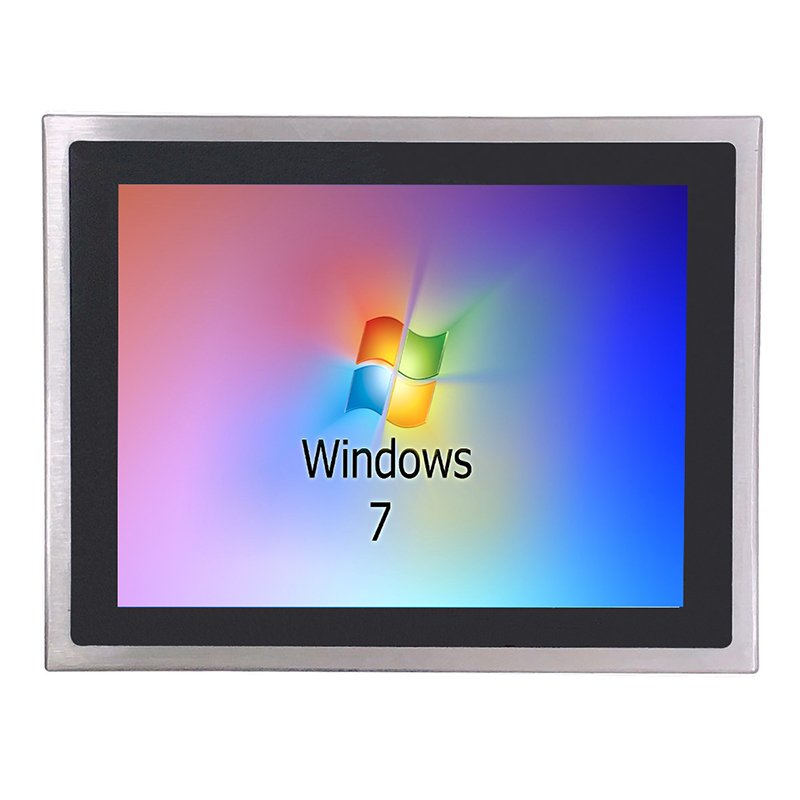Optical bonding refers to a protective glass that is glued in front of a display to enhance its readability where installed in high humidity, or wide temperature, or outdoor environments, especially FULL IP65 IP67 with 10 points capacitive touch. When a normal display is used in an outdoor environment, there are some factors that affect its readability. The most common one is “fog”, or condensation, which forms on the inner surface of the display’s vandal shield. Another factor is the reflection of sunlight, which causes a mirror image on the display. Both phenomena can be solved by using optical bonding.
What Are the Benefits of Optical Bonding?
- Reduction of light reflections and better image quality – in air bonding, light from an external source passes through the panel and air gap (between the display and the glass), causing its refraction. The adhesive used in optical bonding reduces the refraction effect, as the refractive index of the adhesive is similar to glass.


- Moisture condensation prevention and dust protection – moisture and dirt can penetrate into the gap between the module layers, which has a negative impact on the readability of the display. The glue–filled space avoids this problem, the image is readable in any environment, e.g. outdoors, in production halls and warehouses, in hospitals.

- Increased physical endurance – eliminating the gap with resin (glue) increases its physical strength, which allows the use of a ready module in public places, factories, and military applications. Optical bonding allows obtaining the standard IK7 – protection against mechanical impacts of 2J.

- Extended temperature range and EMI filtering: The temperature range of the display can be extended by incorporating ITO heaters on the cover glass; EMI filters can be added via the same mechanism.

The Process of Optical Bonding Can Be Divided into Three Main Stages:
- Preparation – comes down to display and touch screen surface decontamination, and selection of the right adhesive depending on various parameters; (eg screen size, application environment, operating temperatures, etc.)
- Glue dispensing – the glue must be applied precisely on the entire surface of the display;
- Bonding and curing – the most important stage of the entire process, the touch panel is layered onto the LCD module so there are no gaps or bubbles. Then the adhesive is hardened with UV light ( no heat treatment reduces the risk of material contraction).

12.1-inch Stainless Steel Panel PC 1000nits Anti-glare (HV-C121S)
5-inch to 32-inch size range, Customization is welcome!
Touch Optional: No Touch or 5 Wires Resistive Touch or 10 Points Capacitive Touch.
https://hmivision.com/what-differences-between-capacitive-touch-and-re…
The Main Goal of Optical Bonding is to improve display performance in outdoor environments. This method eliminates the air gap between the cover glass and the display. Moreover, an anti-reflective coating is often used in optical bonding glass. The real problem for display readability in outdoor environments is not the display’s brightness but its contrast. Contrast means the ratio of the white level to the black level; in other words, the contrast ratio of the display means the difference of light intensity between the brightest white pixel and the darkest black pixel. The main purpose of optical bonding is to increase the display’s contrast ratio by reducing the amount of reflected ambient light.

15.6-inch Monitor 1000nits Anti-glare Glass -30℃ ~ +80℃ for Propane Vending Machine, Suitable for Raspberry PI (HV-M156E) 5pcs Stocked
8-inch to 21.5-inch size range, Customization is welcome!
Touch Optional: No Touch or 5 Wires Resistive Touch or 10 Points Capacitive Touch.
https://hmivision.com/what-differences-between-capacitive-touch-and-…
We are specializing in Customization for Industrial Touchscreen Monitor, Panel PC for Indoor, Outdoor, Semi-outdoor environment. Suitable solutions will be offered according to your projects.
Welcome inqury!
Categories:
- Accessories44 products
- Camera11 product
- Stainless Steel Keyboard11 product
- VESA Brackets22 products
- Customized Devices3131 products
- Customized Android Touch Tablets77 products
- Customized Touch Monitors33 products
- Customized Touch PCs1111 products
- NFC/RFID/Camera Panel PC1111 products
- Industrial Box PC2424 products
- 4U BOX PC11 product
- Industrial Box/Mini PC2222 products
- IP65 IP67 Waterproof BOX PC11 product
- Industrial PC8888 products
- Weighing Device Panel PC22 products
- 1000nits Panel PC for Kiosk1212 products
- 3mm Bezel Touch PC2020 products
- Android Touch Tablet PC1010 products
- HMI 2nd Industrial Panel PC77 products
- HMI Industrial Panel PC99 products
- IP65/IP67 Waterproof PC2121 products
- Open Frame Touch PC22 products
- Rugged Tablet & Laptop77 products
- Stainless Steel Series2525 products
- Stainless Steel Touch Monitor99 products
- Stainless Steel Touch PC1313 products
- Stainless Steel Android PC33 products
- Touch Screen Monitors112112 products
- 1000nits Monitor for Kiosk1919 products
- 1000nits Monitor for Marine1414 products
- 3mm Bezel Touch Monitor2020 products
- HMI High-end Touch Monitor1414 products
- HMI PLC LCD Monitor11 product
- IP65/IP67 1000nits Monitor3636 products
- Open Frame Touch Monitor1414 products


